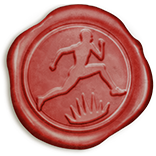
Appropriate modifiers and penalties for non-standard movement in D&D, including climbing, swimming, crawling and jumping.
| Movement | Speed / Details |
|---|---|
| Difficult Terrain Difficult Terrain | Speed / Details: ½ speedDetails |
| Dense forests, deep swamps, rubble-filled ruins, steep mountains, ice-covered ground, etc. | |
| Climbing | Speed / Details: ½ speed (¼ for difficult terrain) |
| Swimming | Speed / Details: ½ speed (¼ for difficult terrain) |
| Crawling | Speed / Details: ½ speed (¼ for difficult terrain) |
| Dropping Prone | Speed / Details: Free movement |
| Standing Up | Speed / Details: ½ Movement |
| Jumping (see our jumping calculator) | |
| Long Jump | Speed / Details: Str score (in feet), 10ft' running start |
| — Standing Jump | Speed / Details: ½ of Str score (in feet) |
| — Try to Jump Further | Speed / Details: Str (Athletic) check |
| — Land in Dif. Terrain | Speed / Details: Dex (Acrobatic) check or land prone |
| High Jump | Speed / Details: 3+Str modifier (in feet), 10ft' running start |
| — Standing High Jump | Speed / Details: ½ of 3+Str modifier (in feet) |
| — Max Jump Reach | Speed / Details: 1½ character's height |
| — Try to Jump Higher | Speed / Details: Str (Athletic) check |
| — Land in Dif. Terrain | Speed / Details: Dex (Acrobatic) check or land prone |
Climbing, Swimming and Crawling are at half speed (quarter for difficult terrain). Might require Str (Athletic) or Dex (Acrobatics) checks.
Jumping: Running long jump distance is Str in feet (and requires at least 10'). Standing long jump is half that distance. Running high jump is 3 + Strength modifier in feet. Standing high jump is half that. Max reach of jump height + 1 1/2 character's height. Jumping further/higher may require a Str (Athletics) check. Landing in difficult terrain requires a Dex (Acrobatics) check to avoid landing prone.